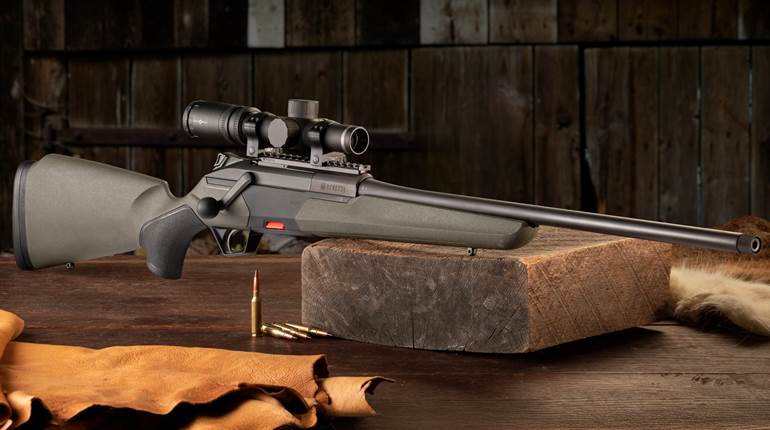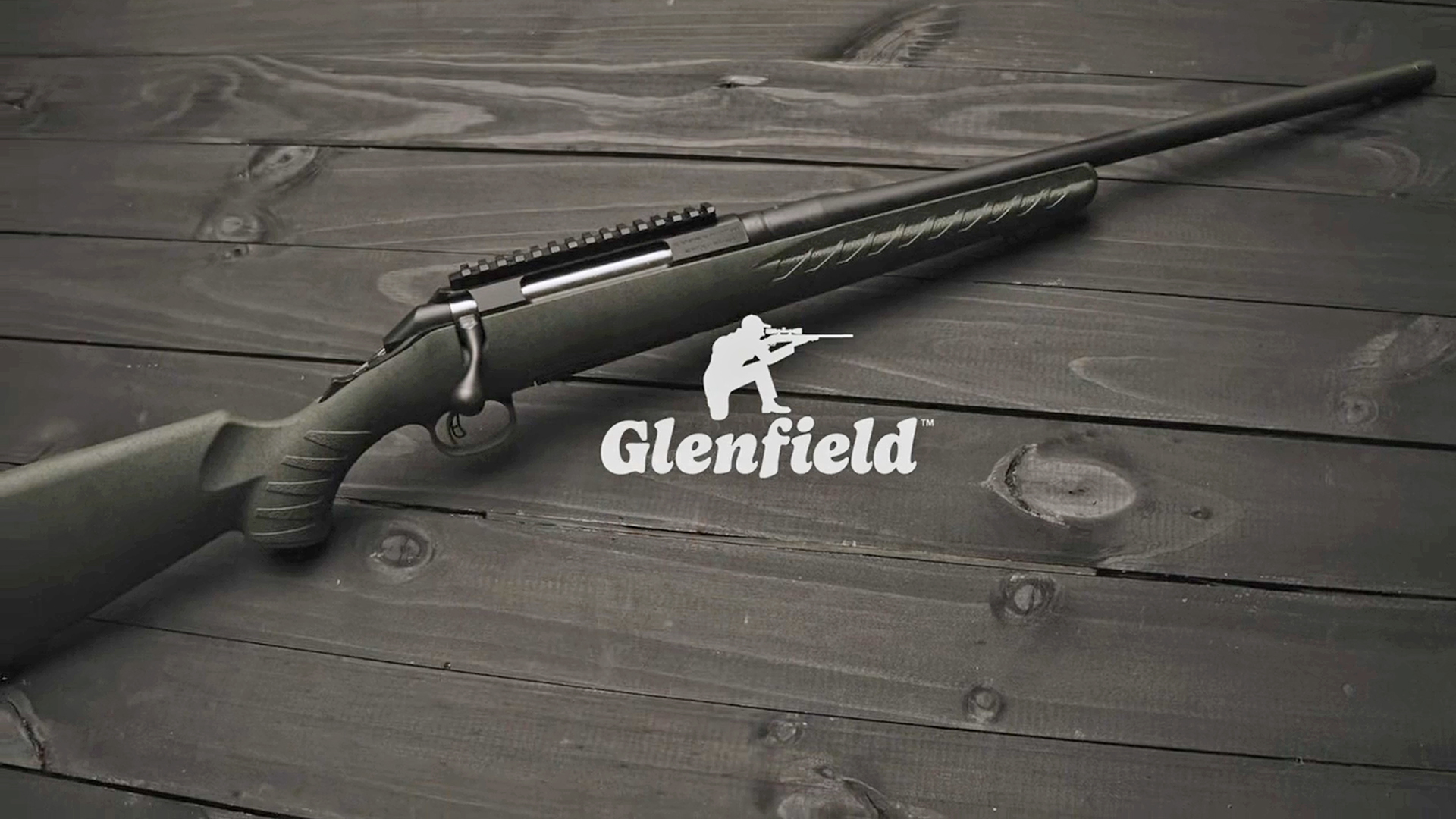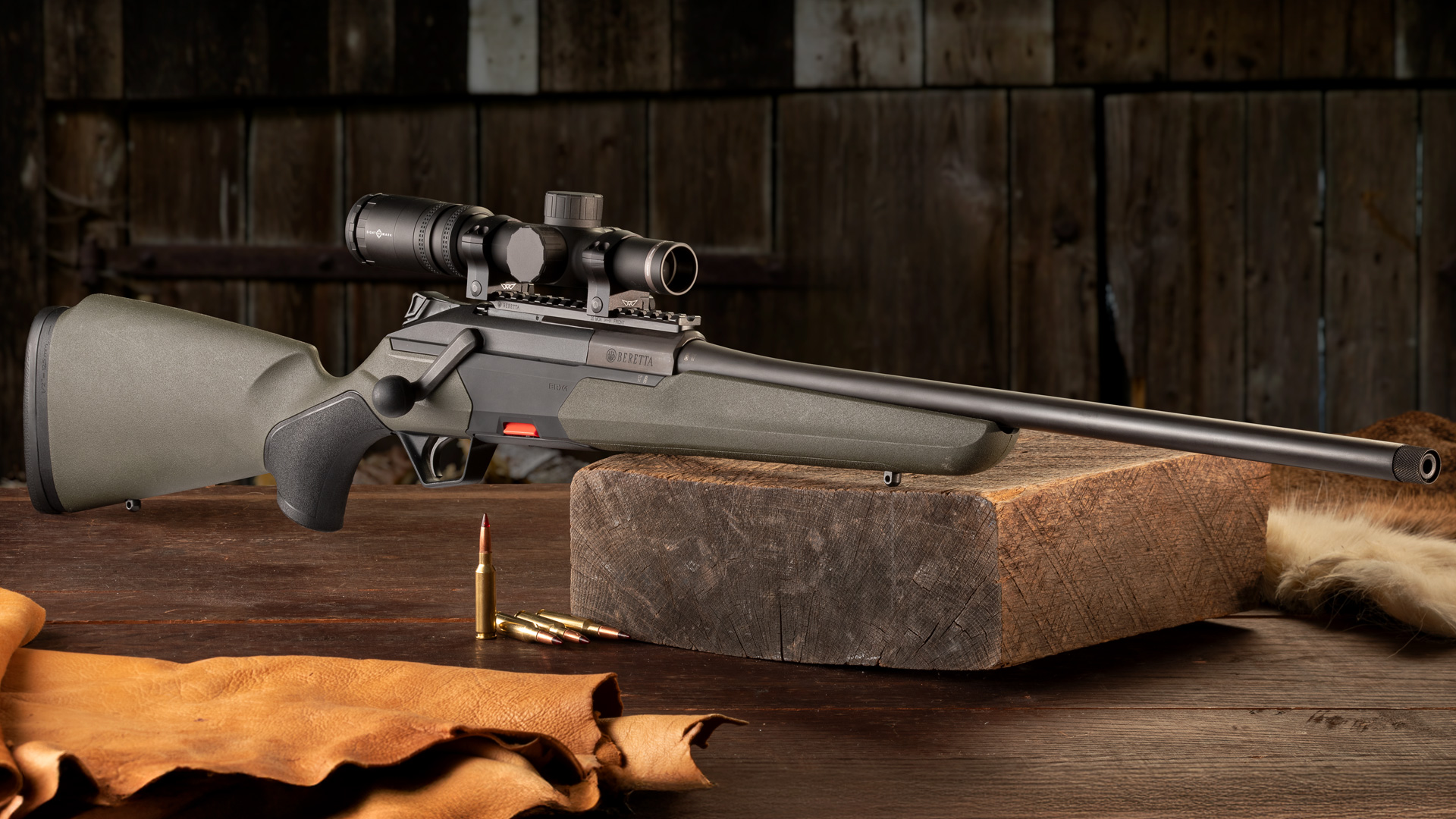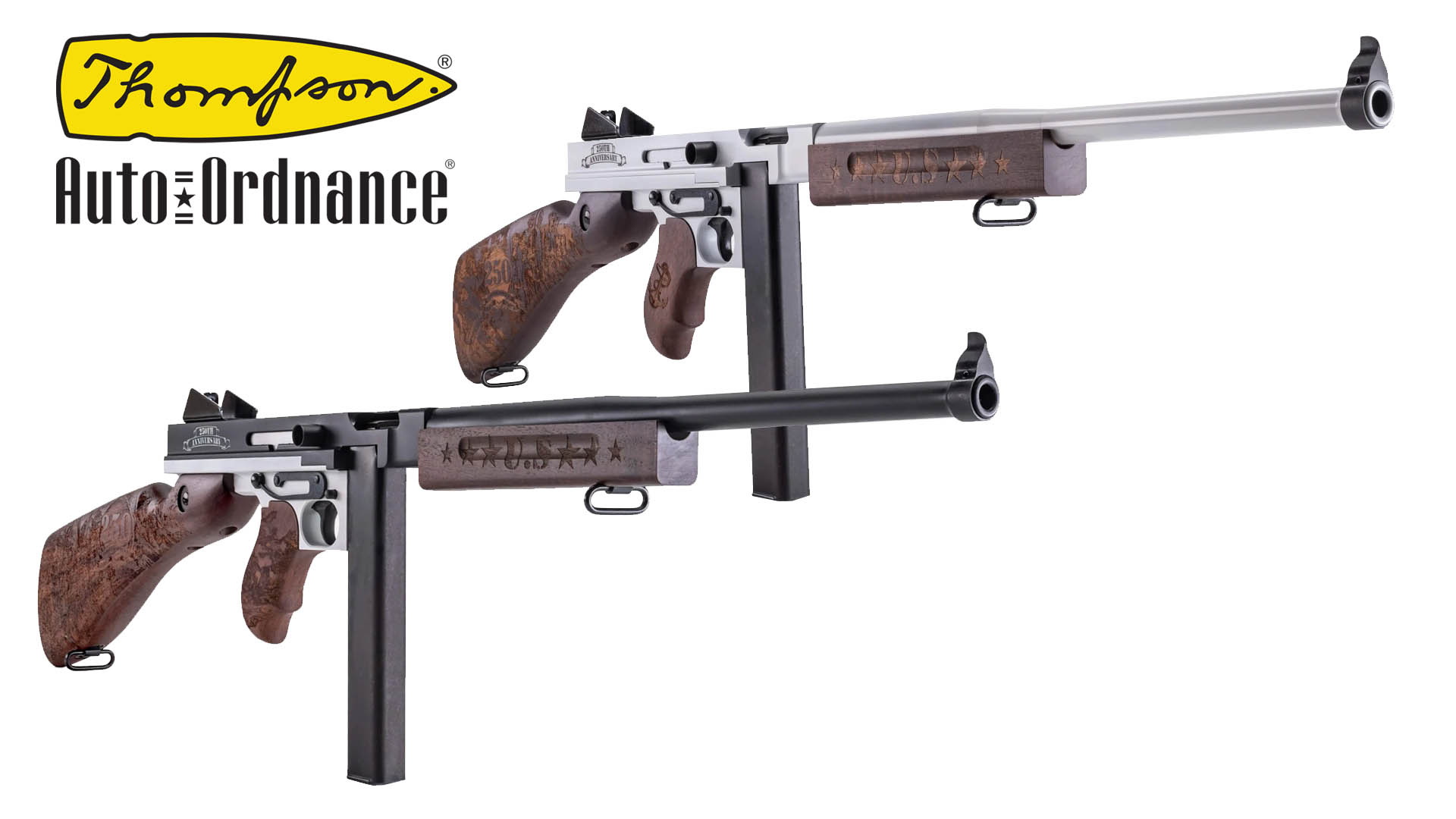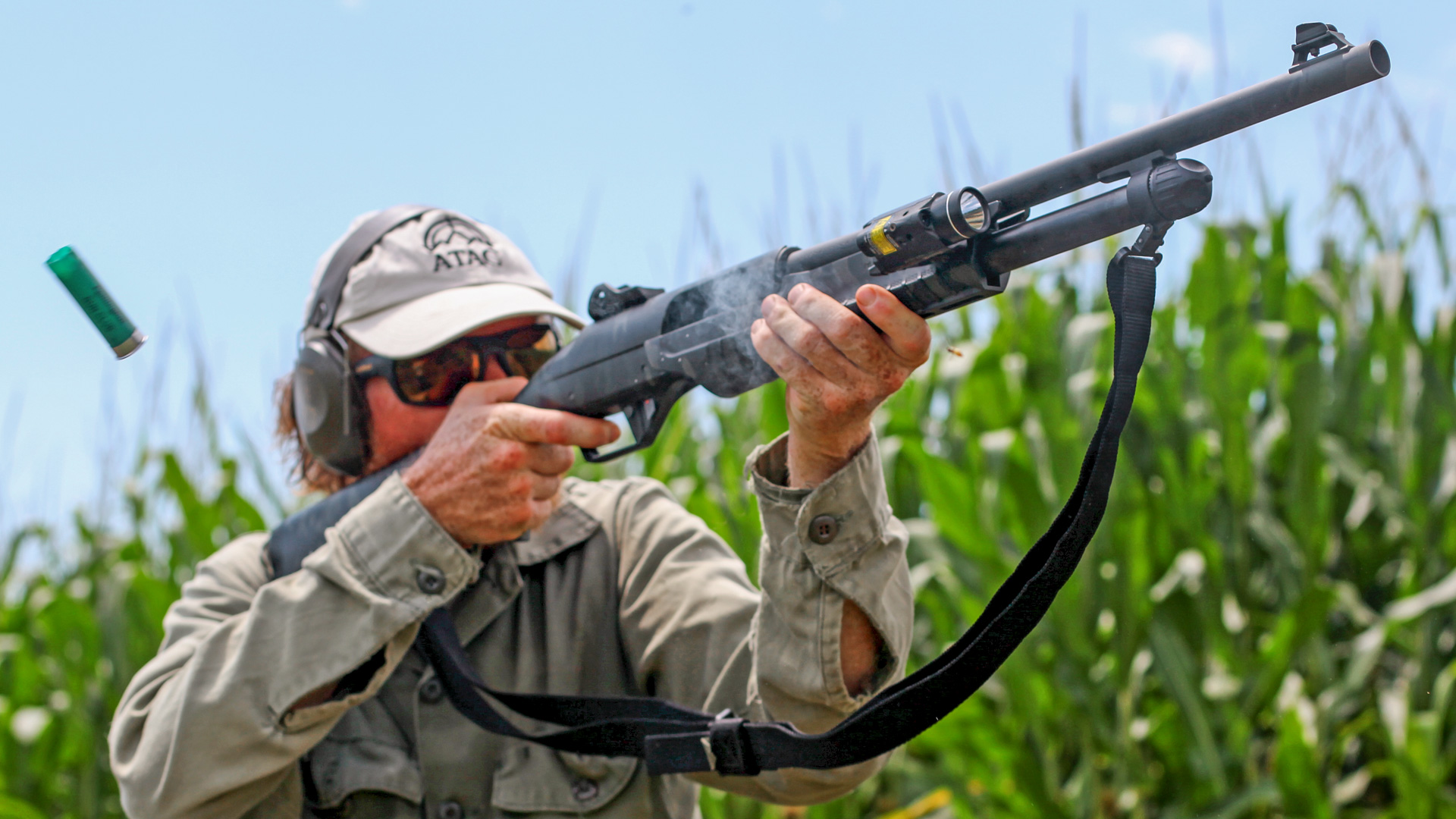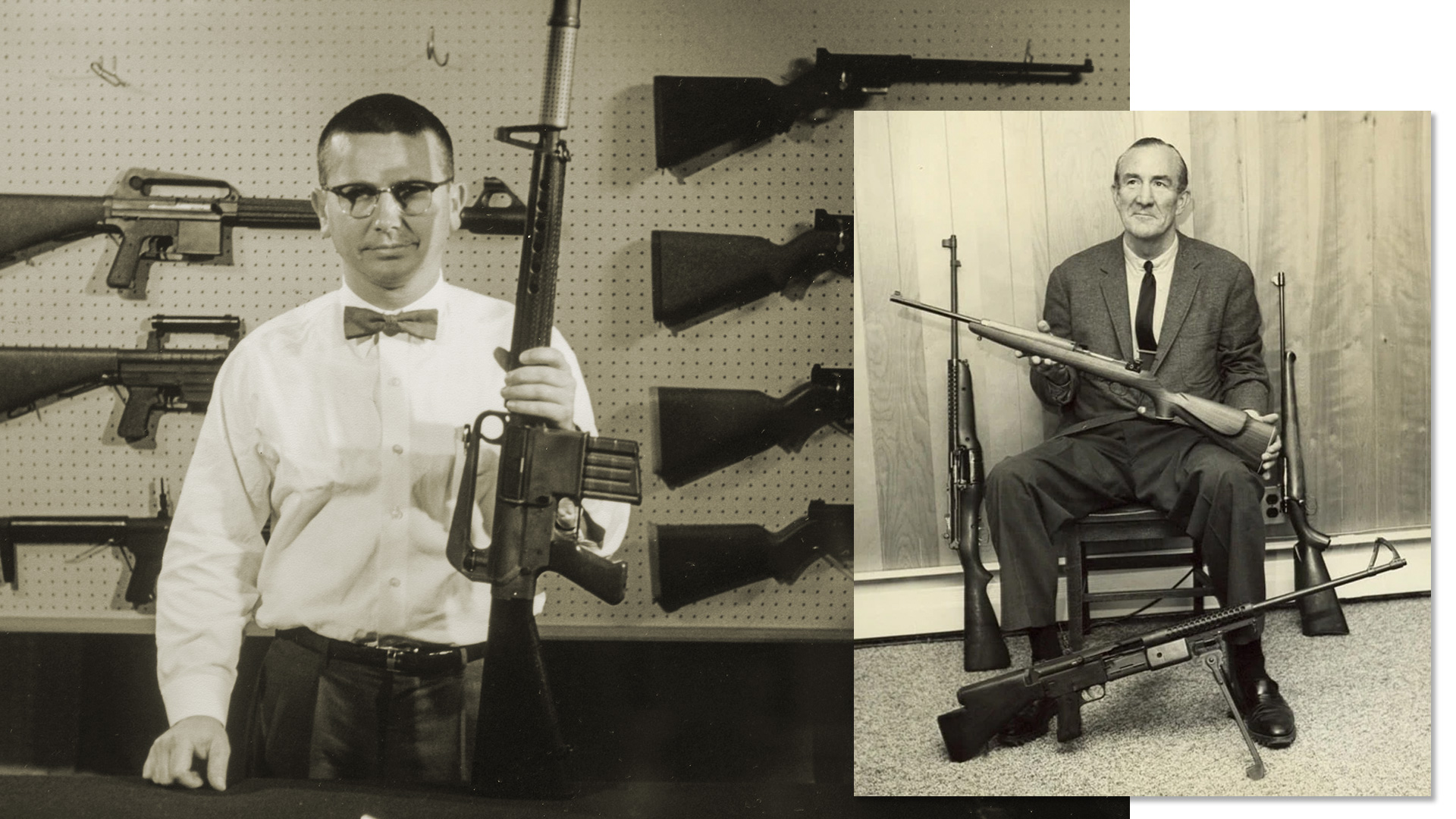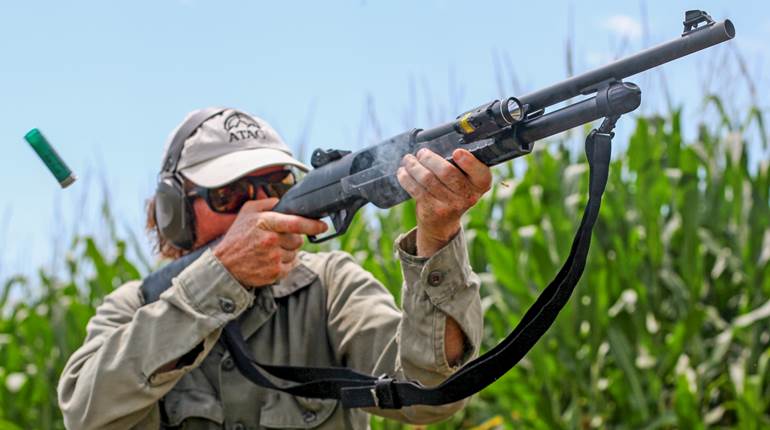
This article, written by Eugene L. Lyons, originally appeared in the February 1974 issue of The American Rifleman. To subscribe to the monthly magazine, visit NRA’s membership page.
The history of what was later to become the Meriden Fire Arms Co. is actually the story of Andrew Fyrberg & Co. of Worcester, Mass. The association of this firm with Sears, Roebuck & Co. formed the basis of what became a giant in the American sporting firearms industry.
At one time Fyrberg was associated with Iver Johnson and later with C.S. Shattuck. It is believed he worked with Shattuck about 20 years. In 1898 Fyrberg opened a small sporting arms factory of his own in Worcester, Mass., and in 1899 he contracted to sell his entire output of shotguns to Sears, Roebuck & Co., an arrangement many manufacturers hesitated to make. The retail merchants' opposition to the growing mail-order giant was hitter and unyielding, and many manufacturers feared selling to Sear—some flatly refused—because other outlets might boycott them.
The founder of the mail-order firm, Richard W. Sears learned that his best hope for obtaining the goods he needed was to seek out manufacturers who wanted to do business with him and then provide the capital to enable them to expand their facilities to meet his needs. Sears lent Fyrberg the money to expand, and he incorporated, giving Sears an interest in the firm. Fyrberg increased his capacity from 15 to 200 guns daily. Not only did his output increase, but he manufactured double-barrel shotguns, revolvers and cal. .22 rifles as well. He soon outgrew his Worcester plant and relocated in an old shoe factory in Hopkinton, Mass., in 1902, where the firm operated until early 1905.
 A. J. Aubrey managed the Meriden plant and expanded production to include shotguns, revolvers and .22-cal. rifles.
A. J. Aubrey managed the Meriden plant and expanded production to include shotguns, revolvers and .22-cal. rifles.
In 1904, Sears bought out Fyrberg's interest in the Hopkinton plant and appointed A.J. Aubrey, formerly of the Parker Brothers Gun Co. of Meriden, Conn., as general manager of the Hopkinton plant. Sears and Aubrey decided the Hopkinton plant was too far removed from the gun-making centers to be of advantage in building a large arms factory. The two men looked over the grounds of the old Malleable Iron Co. plant in Meriden, Conn., found the location and supply of skilled labor in the area to their liking and selected the site for a new factory.
After long negotiation, the plant was purchased for $30,000 and plans were instituted to remodel the building, the work being financed by Sears. In January 1905, Fyrberg moved to Meriden, where the firm was organized as the Meriden Fire Arms Co.
When Sears refitted the plant with machinery, nothing was spared in the effort to obtain every labor-saving device known to the trade. According to one old account, the factory buildings were "filled with modern machines that, like magic, transformed the rough drop forgings, made of the best quality of steel, into a partly completed product, as smoothly and apparently as easily as the modeler shapes his wax."
As large as the plant was, it was but the beginning of a great arms concern. The adjacent property, running nearly 2,000 ft. along the railroad, was purchased, to someday be covered by the company's buildings.
Sears' choice of Aubrey to manage his sporting arms factory was an exceptionally good one. Aubrey thoroughly understood the arms-making business. Between 1906 and 1908 he obtained six patents, some of which were assigned to Sears, Roebuck & Co. The sporting arms made under them were featured in the 1908 Sears catalog.
Here is a description of the A. J. Aubrey Hammerless Single Barrel shotgun, as written in the folksy style of the Sears 1908 catalog:
The A. J. Aubrey Hammerless Single Barrel Shotgun
To give you twice as much value for your money. To give you more gun value for a dollar than you could get in any cheaper single barrel gun for $2.00. To give you for only $7.95 a single barrel breech-loading shotgun that is worth 10 times as much as any of the common grades of single guns that usually sell $4.00 to S8.00; we have built in our own factory at Meriden, Conn. (The Meriden Fire Arms Company) under the direction of Mr. A. J. Aubrey, president and general manager of the gun company. This, our special $7.95 flat water table hammerless breech-loading shotgun, taking a long step ahead in single gun making, making a gun that will grade only with the highest grade hammerless double-barrel breechloading shotguns, a gun with features of workmanship, a gun in which strength, safety, lasting qualities and shooting qualities arc fully equal to the highest grade hammerless double breech-loading shotguns, a gun that outclasses and outmatches any single gun made by any maker.
 A.J. Aubrey revolvers were of hinged frame design and were produced in cals. .32 S&W and .38 S&W. Shotgun ammunition was branded under the Meriden name and sold by Sears. The above illustrations are from the 1908 Sears catalog.
A.J. Aubrey revolvers were of hinged frame design and were produced in cals. .32 S&W and .38 S&W. Shotgun ammunition was branded under the Meriden name and sold by Sears. The above illustrations are from the 1908 Sears catalog.
The A.J. Aubrey shotguns were well designed and serviceably made. A single-barrel model presently owned and used by the author still shows traces of the original case hardening. Though the catalog says these Aubrey single-barrel guns were available with a twist-steel barrel for an additional $2, the author's has a fluid steel barrel. A.J. Aubrey hammer and hammerless models were made in 12-gauge only with 30" and 32" barrels. Stocks were selected black walnut. The exposed hammer version was priced at $6.95.
In describing other brands of shotguns advertised in the Sears catalog, Richard Sears nearly always compared with the A.J. Aubrey models. Page 720 of the 1908 catalog described the "1908 IMPROVED MODEL WHITE POWDER WONDER" selling for $3.94. The description in part is as follows:
"The New Improved White Powder Wonder as offered on this page is now made for us under contract by a New England maker, made on the general lines of our $3.49 single-barrel guns shown on another page, but a better gun throughout, a better quality of barrel and a general improvement in gunsmith making from beginning to end, and our $3.94 price barely covers the cost to us, with but our one small percentage of profit added … . In your own interest, and before you buy a single gun of any kind from us or any other house, any make at any price, please let us call your attention to the Aubrey Hammerless Flat Water Table Automatic Shell Ejecting Breech Loading Shotgun shown on another page in this catalog and offered by us for $7.95."
A.J. Aubrey double-barrel shotguns were offered in both hammer and hammerless models, the prices ranging from $13.85 to $38.50. The higher-priced models were engraved and had Damascus barrels. The advertising, however, was just as elaborate and incorporated the same glowing terms used to describe the single-barrel Aubrey models.
 Buttplate of A.J. Aubrey shotgun (l.) bears markings indicating manufacture by The Meriden Firearms Company. Action of Meriden cal. .22 single-shot rifle (r.) was of modified rollingblock design. Note bailed takedown screw in bottom of frame.
Buttplate of A.J. Aubrey shotgun (l.) bears markings indicating manufacture by The Meriden Firearms Company. Action of Meriden cal. .22 single-shot rifle (r.) was of modified rollingblock design. Note bailed takedown screw in bottom of frame.
As an inducement to the buyer to purchase not only an A.J. Aubrey shotgun but any other brand offered by Sears, a special front sight was given free to any purchaser. This sight, described in the Sears catalogs as the "Globe Sight" was invented by Aubrey and patented Nov. 6, 1906. A second model for double-barrel shotguns also was patented the same year, with Sears, Roebuck & Co., of course having the full use of these patents. If purchased outright, Globe sights were available for single- and double-barrel shotguns at $0.38 and $0.40 each.
Revolvers produced by the Meriden Fire Arms Co. were of the hinged frame pattern and were made in cals. .32 S&W and .38 S&W. Advertised as the A.J. Aubrey revolver, these arms carried the Meriden Fire Arms Co. monogram on their hard rubber grips. Available with either nickel plate or blued finish and 3" barrel, the 1902 catalog priced these revolvers from $2.95 to $3.40.
The only rifles known to have been produced by Meriden Fire Arms Co. were low-cost .22-cal. models. A modified rolling-block model was made as well as single-shot bolt-action models. These sold for less than $3 each. While produced in large numbers, these rifles are seldom seen today.
Arms produced by the Meriden Fire Arms Co. first appeared in the 1905 fall catalog. By this time, production had reached more than 400 guns and revolvers daily. Production in early 1906 was stated as 200 single-barrel shotguns per day, 100 revolvers per day and the balance of the daily production of 400 units being divided between .22-cal. rifles and double-barrel shotguns. Aside from brief early records, production is difficult to estimate. Some models of Meriden-produced arms did not carry the Meriden name. To further confuse the issue, Sears, Roebuck & Co. bought additional arms from other producers which bore Sears' trademarks.
 In Sears 1908 catalog, A.J. Aubrey hammerless single barrel shotgun (l.) was priced at $7.95. Earlier White Powder Wonder model, (r.), sold for even less.
In Sears 1908 catalog, A.J. Aubrey hammerless single barrel shotgun (l.) was priced at $7.95. Earlier White Powder Wonder model, (r.), sold for even less.
Shotguns carried such trade names as White Powder Wonder, Our World's Challenge Ejector, The Long Range Winner, and The World's Wonder. These were probably produced by Sears, either in Worcester, Hopkinton or Meriden, but exact identification is difficult.
In 1916, the production facilities of the Meriden Fire Arms Co. were moved to Center St. in Meriden and the plant on North Colony St. was sold to the New England Westinghouse Co. The Sears catalog issued in the fall of 1918 states. "The factory at Meriden where the well-known Meriden Fire Arms were made has discontinued the manufacture of sporting fire arms." Sears firearms were then featured in the catalog as the "Gladiator" brand. Since 1918 Sears, Roebuck & Co. has sold sporting arms made by well-known American and foreign manufacturers, many of them marked with various Sears trademarks.












